MaryAnn Bernal's Blog, page 283
May 9, 2014
'Vampire' Skeleton Unearthed in Poland
by Rossella Lorenzi
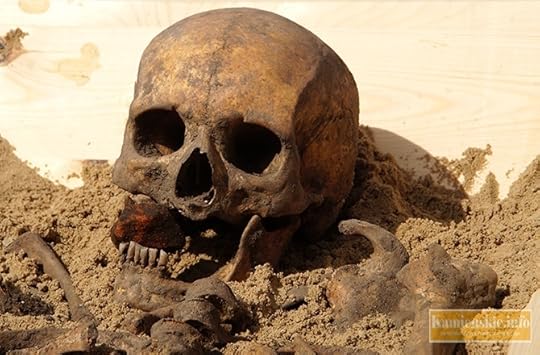 Archaeologists in Poland say they have discovered a skeleton with a brick stuck into the mouth — evidence that the subject was believed to be a vampire.
Archaeologists in Poland say they have discovered a skeleton with a brick stuck into the mouth — evidence that the subject was believed to be a vampire.
Dated to the 16th-17th century, the grave was unearthed during excavations in the town of Kamien Pomorski, in northwestern Poland, the Kamienskie.info website reported.
In addition to the brick, which was wedged so violently into the mouth to knock out the upper teeth, the skeleton featured a leg with a hole likely made from a puncture. This would suggest the leg had been staked to the ground to prevent the individual from rising from its grave.
Photos: Mummy Stash Found in Italian Church
“A piece of debris brick in the mouth and a pierced thigh indicate this is a vampiric burial,” Slawomir Gorka, the archaeologist who led the dig, said.
People feared that those accused to be vampires would rise from their graves like zombies. In some cases, to kill the undead creatures, they placed a stone or brick into the mouth so that the vampire would starve to death.
According to Gorka, such vampire-slaying rituals were common in local graves between the 13th and 17th centuries.
Indeed, it’s not the first time that “deviant burials” have been unearthed in Poland and across eastern Europe.
Last year, Polish archaeologists found a grave near the town of Gliwice filled with skeletons whose severed heads were placed atop their legs.
Did Zombies Roam Medieval Ireland?
Such burials appear to be common in Slavic regions for people accused of vampirism, although alternative hypothesis suggested the skeletons were simply victims of an execution.
Deviant burials are often linked to Black Death-related cemeteries and to medieval ignorance of how diseases spread.
Mass graves were often reopened to bury corpses during epidemics, exposing bloated bodies with blood seeping out of the mouth and with a hole in the shroud used to cover their face.
Medieval Skeletons Found at Florence’s Uffizi
Medieval people, not knowing what happens to bodies after death, believed that “vampire” individuals spread the plague by chewing on their shrouds after dying.
In a time before germ theory, the stone in the mouth was then used as a disease-blocking trick.
Image: The “vampire” skeleton unearthed in Poland. Credit: Kamienskie.info
http://news.discovery.com/history/archaeology/vampire-skeleton-unearthed-in-poland-14050.htm

 Archaeologists in Poland say they have discovered a skeleton with a brick stuck into the mouth — evidence that the subject was believed to be a vampire.
Archaeologists in Poland say they have discovered a skeleton with a brick stuck into the mouth — evidence that the subject was believed to be a vampire.Dated to the 16th-17th century, the grave was unearthed during excavations in the town of Kamien Pomorski, in northwestern Poland, the Kamienskie.info website reported.
In addition to the brick, which was wedged so violently into the mouth to knock out the upper teeth, the skeleton featured a leg with a hole likely made from a puncture. This would suggest the leg had been staked to the ground to prevent the individual from rising from its grave.
Photos: Mummy Stash Found in Italian Church
“A piece of debris brick in the mouth and a pierced thigh indicate this is a vampiric burial,” Slawomir Gorka, the archaeologist who led the dig, said.
People feared that those accused to be vampires would rise from their graves like zombies. In some cases, to kill the undead creatures, they placed a stone or brick into the mouth so that the vampire would starve to death.
According to Gorka, such vampire-slaying rituals were common in local graves between the 13th and 17th centuries.
Indeed, it’s not the first time that “deviant burials” have been unearthed in Poland and across eastern Europe.
Last year, Polish archaeologists found a grave near the town of Gliwice filled with skeletons whose severed heads were placed atop their legs.
Did Zombies Roam Medieval Ireland?
Such burials appear to be common in Slavic regions for people accused of vampirism, although alternative hypothesis suggested the skeletons were simply victims of an execution.
Deviant burials are often linked to Black Death-related cemeteries and to medieval ignorance of how diseases spread.
Mass graves were often reopened to bury corpses during epidemics, exposing bloated bodies with blood seeping out of the mouth and with a hole in the shroud used to cover their face.
Medieval Skeletons Found at Florence’s Uffizi
Medieval people, not knowing what happens to bodies after death, believed that “vampire” individuals spread the plague by chewing on their shrouds after dying.
In a time before germ theory, the stone in the mouth was then used as a disease-blocking trick.
Image: The “vampire” skeleton unearthed in Poland. Credit: Kamienskie.info
http://news.discovery.com/history/archaeology/vampire-skeleton-unearthed-in-poland-14050.htm

Published on May 09, 2014 12:40
Tomb dating back to 1100 B.C. found in Egypt
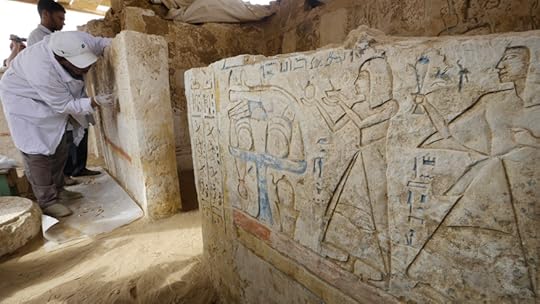 An Egyptian conservator cleans limestones at a newly-discovered tomb dating back to around 1100 B.C. at the Saqqara archaeological site, 19 miles south of Cairo, Egypt.AP
An Egyptian conservator cleans limestones at a newly-discovered tomb dating back to around 1100 B.C. at the Saqqara archaeological site, 19 miles south of Cairo, Egypt.AP
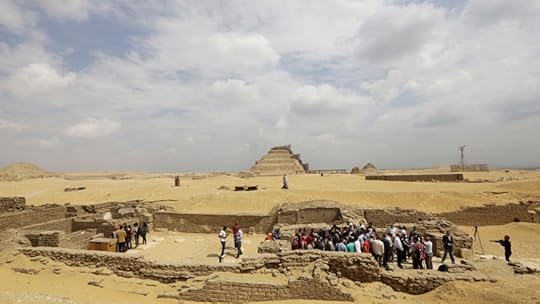 Archaeologists and journalists gather at a newly-discovered tomb dating back to around 1100 B.C. at the Saqqara archaeological site, 19 miles south of Cairo, Egypt.AP
Archaeologists and journalists gather at a newly-discovered tomb dating back to around 1100 B.C. at the Saqqara archaeological site, 19 miles south of Cairo, Egypt.AP
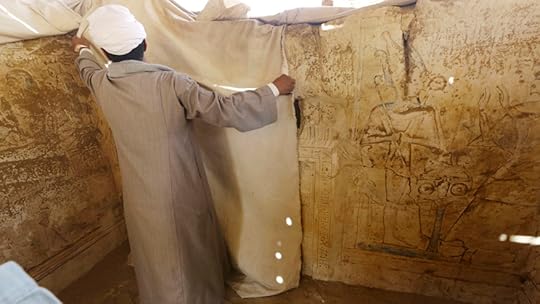 An Egyptian archeology worker covers limestones at a newly-discovered tomb in Egypt.AP
An Egyptian archeology worker covers limestones at a newly-discovered tomb in Egypt.AP
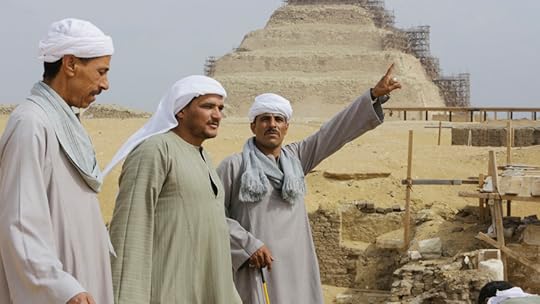 Lead archaeology workers supervise as their colleagues dig a newly-discovered tomb in Egypt.AP
Lead archaeology workers supervise as their colleagues dig a newly-discovered tomb in Egypt.AP
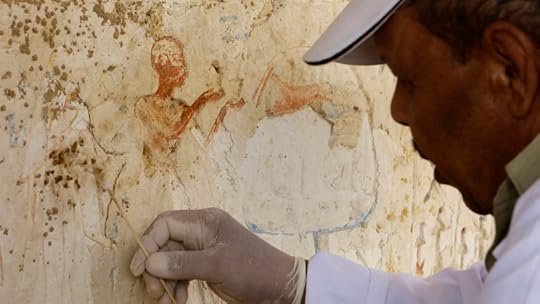 An Egyptian conservator works at a newly-discovered tomb in Egypt.AP CAIRO – Archeologists have found a tomb dating back to around 1100 B.C. south of Cairo, Egypt's Antiquities Ministry said Thursday.
An Egyptian conservator works at a newly-discovered tomb in Egypt.AP CAIRO – Archeologists have found a tomb dating back to around 1100 B.C. south of Cairo, Egypt's Antiquities Ministry said Thursday.Antiquities Minister Mohamed Ibrahim said that the tomb belongs to a guard of the army archives and royal messenger to foreign countries. Ibrahim said the Cairo University Faculty of Archaeology's discovery at Saqqara adds "a chapter to our knowledge about the history of Saqqara."
Ola el-Egeizy of Cairo University said the tomb contains "very nice inscriptions" of the funerary procession and the afterlife of the deceased.
The tomb was found near another one dating back to the same period belonging to the head of the army that was discovered in the previous excavation season. That tomb was larger but much of what remains is mud bricks as "most of its stone blocks were stolen and many of them are in museums all over the world," said el-Egeizy. Because of the blocks, archaeologists had long known that the tomb existed though it was not uncovered until recently.
Saqqara was the necropolis for the ancient Egyptian city of Memphis and site of the oldest known pyramid in Egypt.
Egypt's vital tourism industry has suffered in the wake of the 2011 uprising that toppled autocratic leader Hosni Mubarak.
http://www.foxnews.com/science/2014/05/08/tomb-dating-back-to-1100-bc-found-in-egypt/

Published on May 09, 2014 12:34
Diane Turner - London Rocks - 09.05.2014
Published on May 09, 2014 12:29
History Trivia - Lincoln Cathedral, one of the most important medieval cathedrals in England, is consecrated.
May 9
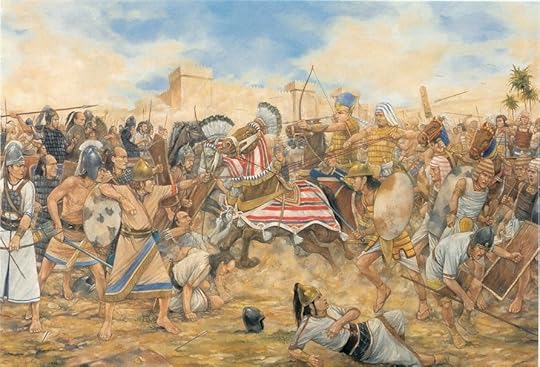
1457 BC Battle of Megiddo between Thutmose III and a large Canaanite coalition under the King of Kadesh. It was the first battle to have been recorded in what is accepted as relatively reliable detail.

328 Athanasius was elected Patriarch bishop of Alexandria.

1092 Lincoln Cathedral, one of the most important medieval cathedrals in England, was consecrated.
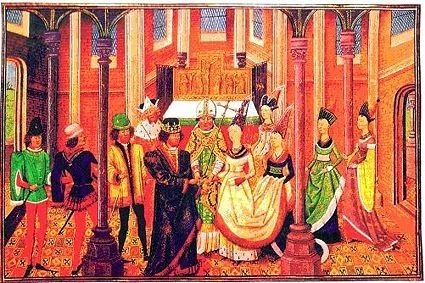 1386 England and Portugal signed the Treaty of Windsor, the oldest alliance in Europe still in force.
1386 England and Portugal signed the Treaty of Windsor, the oldest alliance in Europe still in force.
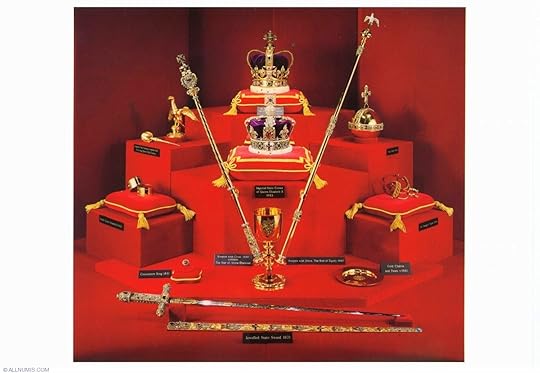
1671 The crown jewels were briefly stolen from the Tower of London by Irish adventurer Colonel Thomas Blood.


1457 BC Battle of Megiddo between Thutmose III and a large Canaanite coalition under the King of Kadesh. It was the first battle to have been recorded in what is accepted as relatively reliable detail.

328 Athanasius was elected Patriarch bishop of Alexandria.

1092 Lincoln Cathedral, one of the most important medieval cathedrals in England, was consecrated.
 1386 England and Portugal signed the Treaty of Windsor, the oldest alliance in Europe still in force.
1386 England and Portugal signed the Treaty of Windsor, the oldest alliance in Europe still in force. 
1671 The crown jewels were briefly stolen from the Tower of London by Irish adventurer Colonel Thomas Blood.

Published on May 09, 2014 06:47
May 8, 2014
History Trivia - Reccared summons the Third Council of Toledo.
May 8
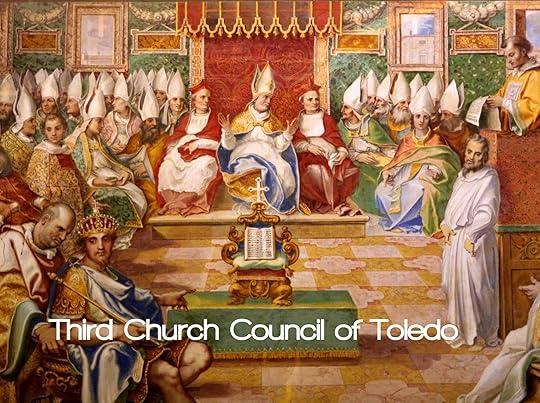
589 Reccared (reigned 586–601) was Visigothic King of Hispania, Septimania and Galicia summoned the Third Council of Toledo. The council enacted restrictions on Jews, and the conversion of the country to Christianity led to repeated persecutions of Jews.

1450 Jack Cade's Rebellion: Kentishmen revolt against King Henry VI.

1521 Parliament of Worms installed an Imperial edict against Marten Luther, which denounced the monk and commanded that all his works be burned.
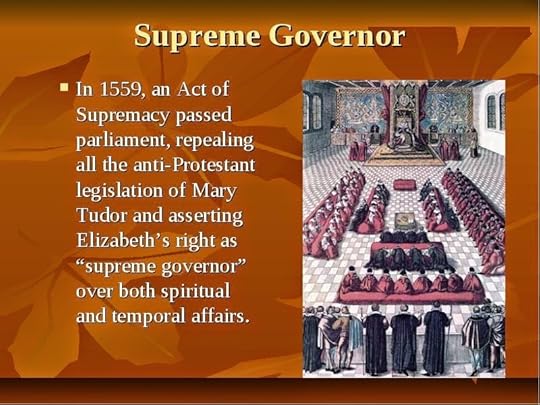
1559 An act of supremacy defined Queen Elizabeth I as the supreme governor of the Church of England.

1660 Parliament proclaimed Charles II king of England, restoring the monarchy after more than a decade.


589 Reccared (reigned 586–601) was Visigothic King of Hispania, Septimania and Galicia summoned the Third Council of Toledo. The council enacted restrictions on Jews, and the conversion of the country to Christianity led to repeated persecutions of Jews.

1450 Jack Cade's Rebellion: Kentishmen revolt against King Henry VI.

1521 Parliament of Worms installed an Imperial edict against Marten Luther, which denounced the monk and commanded that all his works be burned.

1559 An act of supremacy defined Queen Elizabeth I as the supreme governor of the Church of England.

1660 Parliament proclaimed Charles II king of England, restoring the monarchy after more than a decade.

Published on May 08, 2014 06:28
May 7, 2014
The Wizard of Notts Recommends: How Notts County Completed The Great Escape

A look back on Notts County's remarkable turnaround, which ended in an emotional final day draw with Oldham Athletic to keep the club in Sky Bet League 1.

Published on May 07, 2014 05:47
History Trivia - The Hagia Sophia (in Constantinople) collapses
May 7
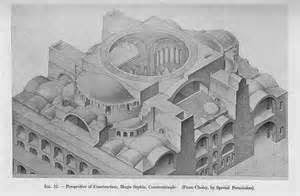
558 The Hagia Sophia (in Constantinople) collapsed. Justinian I immediately ordered that the dome be rebuilt.
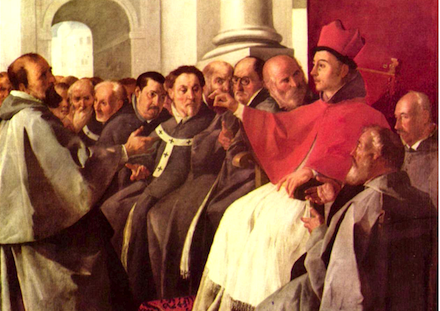
1274 in France, the Second Council of Lyons opened, which addressed the union of the Eastern and Western churches, regulating the election of the Pope and church reform.

1348 Charles University in Prague (Universitas Carolina/Univerzita Karlova) was established as the first university in Central Europe.
 1429 English siege of Orleans broken by Joan of Arc.
1429 English siege of Orleans broken by Joan of Arc.


558 The Hagia Sophia (in Constantinople) collapsed. Justinian I immediately ordered that the dome be rebuilt.

1274 in France, the Second Council of Lyons opened, which addressed the union of the Eastern and Western churches, regulating the election of the Pope and church reform.

1348 Charles University in Prague (Universitas Carolina/Univerzita Karlova) was established as the first university in Central Europe.
 1429 English siege of Orleans broken by Joan of Arc.
1429 English siege of Orleans broken by Joan of Arc.
Published on May 07, 2014 05:44
May 6, 2014
Mr. Chuckles has his paws in The Wizard's Cauldron, checking out children's author, Ngaire Elder

The Wizard says:
Long term Wizardwatchers will need no introduction to Ngaire Elder, children's author and occasional co-host here at the Cauldron.
A resident of Spain and mother of four, Ngaire is extremely popular as a blogger and a writer. She's here to talk about the dark arts of Audio Books, which are exploding like spring flowers all over Indie.
If you ever wanted to know how to set your own audio book up, then Ngaire is here to tell you. I picked up the Wizphone and called Ngaire as she herded her many Burros through the vast acreage of her Cadiz rancho. Here's what she had to say.
Read more: http://greenwizard62.blogspot.com/2014/05/top-childrens-author-ngaire-elder-talks.html

Published on May 06, 2014 15:38
Shipwreck off South Carolina gives up more gold
http://www.foxnews.com/science/2014/05/05/shipwreck-off-south-carolina-gives-up-more-gold/
By Kate Seamons
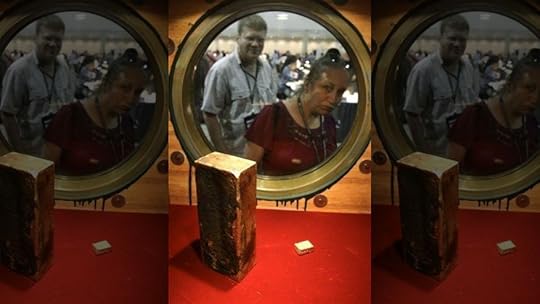 This Aug. 10, 2010 photo shows a gold ingot weighing more than 662 ounces recovered from the shipwreck of the SS Central America which sank in 1857.AP Photo/Steven SenneThe SS Central America's watery grave 160 miles off the South Carolina coast is indeed a golden one. Odyssey Marine Exploration last month explored the wreck of the ship, which went down in 1857 laden with so much gold that its sinking triggered a national financial panic, and the
New York Times
reports that the robot it sent to plumb the depths surfaced with quite the load: five gold bars clocking in at 66 pounds—or about $1.2 million.
This Aug. 10, 2010 photo shows a gold ingot weighing more than 662 ounces recovered from the shipwreck of the SS Central America which sank in 1857.AP Photo/Steven SenneThe SS Central America's watery grave 160 miles off the South Carolina coast is indeed a golden one. Odyssey Marine Exploration last month explored the wreck of the ship, which went down in 1857 laden with so much gold that its sinking triggered a national financial panic, and the
New York Times
reports that the robot it sent to plumb the depths surfaced with quite the load: five gold bars clocking in at 66 pounds—or about $1.2 million.
As for what remains, Odyssey thinks there could be as much as $85 million in riches underwater. But in this case, what's come before is just as notable, and intriguing, as Odyssey has an unexpected partner in its search: a court-appointed receiver.
ADVERTISEMENTADVERTISEMENTThe wreck was first explored in 1988 by a team backed by investors and led by Ohioan Thomas Thompson, who recovered what would today be worth $76 million in gold, about two tons all told.
A wild legal battle followed after a range of claimants emerged from the woodwork, among them insurance companies who had paid out claims related to the gold more than 100 years prior.
In 2000, Thompson was finally able to sell the portion of the gold he was left with, for a reported $52 million—and gave none of the windfall to his 251 investors.
In 2012, Thompson skipped out on a court hearing; he and his female assistant vanished from their Florida mansion (leaving behind, among other things, a book on how to adopt a fresh identity) before he could be arrested.
In May, Columbus lawyer Ira Kane was named receiver and instructed to recover what gold he could on the investors' behalf; he selected Odyssey to help him do so.
Its Odyssey Explorer is now surveying the wreckage, and the Columbus Dispatch reports the entire operation could take as long as 150 days, with rotating crews working 24 hours a day during the recovery.
(Odyssey managed to make a major discovery in 2013 involving silver.)
By Kate Seamons
 This Aug. 10, 2010 photo shows a gold ingot weighing more than 662 ounces recovered from the shipwreck of the SS Central America which sank in 1857.AP Photo/Steven SenneThe SS Central America's watery grave 160 miles off the South Carolina coast is indeed a golden one. Odyssey Marine Exploration last month explored the wreck of the ship, which went down in 1857 laden with so much gold that its sinking triggered a national financial panic, and the
New York Times
reports that the robot it sent to plumb the depths surfaced with quite the load: five gold bars clocking in at 66 pounds—or about $1.2 million.
This Aug. 10, 2010 photo shows a gold ingot weighing more than 662 ounces recovered from the shipwreck of the SS Central America which sank in 1857.AP Photo/Steven SenneThe SS Central America's watery grave 160 miles off the South Carolina coast is indeed a golden one. Odyssey Marine Exploration last month explored the wreck of the ship, which went down in 1857 laden with so much gold that its sinking triggered a national financial panic, and the
New York Times
reports that the robot it sent to plumb the depths surfaced with quite the load: five gold bars clocking in at 66 pounds—or about $1.2 million.As for what remains, Odyssey thinks there could be as much as $85 million in riches underwater. But in this case, what's come before is just as notable, and intriguing, as Odyssey has an unexpected partner in its search: a court-appointed receiver.
ADVERTISEMENTADVERTISEMENTThe wreck was first explored in 1988 by a team backed by investors and led by Ohioan Thomas Thompson, who recovered what would today be worth $76 million in gold, about two tons all told.
A wild legal battle followed after a range of claimants emerged from the woodwork, among them insurance companies who had paid out claims related to the gold more than 100 years prior.
In 2000, Thompson was finally able to sell the portion of the gold he was left with, for a reported $52 million—and gave none of the windfall to his 251 investors.
In 2012, Thompson skipped out on a court hearing; he and his female assistant vanished from their Florida mansion (leaving behind, among other things, a book on how to adopt a fresh identity) before he could be arrested.
In May, Columbus lawyer Ira Kane was named receiver and instructed to recover what gold he could on the investors' behalf; he selected Odyssey to help him do so.
Its Odyssey Explorer is now surveying the wreckage, and the Columbus Dispatch reports the entire operation could take as long as 150 days, with rotating crews working 24 hours a day during the recovery.
(Odyssey managed to make a major discovery in 2013 involving silver.)

Published on May 06, 2014 07:31
Older Than Nazca: Mysterious Rock Lines in Peru
by Stephanie Pappas, LiveScience
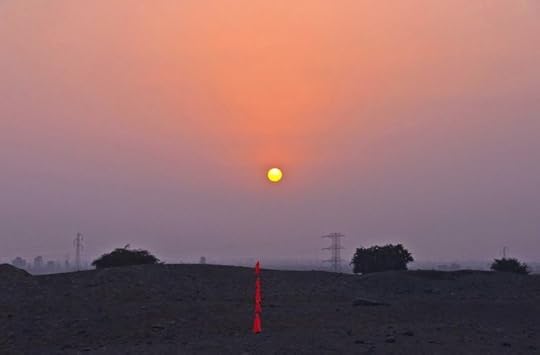 Intricate rock lines in the Peruvian desert probably advertised for ancient trade gatherings. Above, a marker points to the solstice sunset. New rock lines discovered in Peru predate the famous Nazca Lines by centuries and likely once marked the site of ancient fairs, researchers say. The lines were created by people of the Paracas, a civilization that arose around 800 B.C. in what is now Peru. The Paracas culture predated the Nazca culture, which came onto the scene around 100 B.C. The Nazca people are famous for their fantastic geoglyphs, or rock lines, built in the shapes of monkeys, birds and other animals. The new lines date to around 300 B.C., making them at least 300 years older than the oldest Nazca lines, said Charles Stanish, the director of the Cotsen Institute of Archaeology at the University of California, Los Angeles, who reported the new find today (May 5) in the journal Proceedings of the National Academy of SciencesThey used the lines in a different way than the Nazca," Stanish told Live Science. "They basically created these areas of highly ritualized processions and activities that were not settled permanently." [See Images of Ancient 'Nazca' Lines & Fair Site]The closest European analog, Stanish said, would be the medieval fairs that brought visitors from far and wide.
Intricate rock lines in the Peruvian desert probably advertised for ancient trade gatherings. Above, a marker points to the solstice sunset. New rock lines discovered in Peru predate the famous Nazca Lines by centuries and likely once marked the site of ancient fairs, researchers say. The lines were created by people of the Paracas, a civilization that arose around 800 B.C. in what is now Peru. The Paracas culture predated the Nazca culture, which came onto the scene around 100 B.C. The Nazca people are famous for their fantastic geoglyphs, or rock lines, built in the shapes of monkeys, birds and other animals. The new lines date to around 300 B.C., making them at least 300 years older than the oldest Nazca lines, said Charles Stanish, the director of the Cotsen Institute of Archaeology at the University of California, Los Angeles, who reported the new find today (May 5) in the journal Proceedings of the National Academy of SciencesThey used the lines in a different way than the Nazca," Stanish told Live Science. "They basically created these areas of highly ritualized processions and activities that were not settled permanently." [See Images of Ancient 'Nazca' Lines & Fair Site]The closest European analog, Stanish said, would be the medieval fairs that brought visitors from far and wide.
Ancient fairs
Stanish and his team discovered the lines in the Chinca Valley, which is about 125 miles (200 kilometers) south of Lima, Peru. The area has a history of pre-European-contact settlements stretching from at least 800 B.C. to the 1500s A.D.
Archaeological surveys revealed large, ancient mounds in the valley. Over three field seasons, Stanish and his colleagues mapped these mounds, as well as nearby rock lines associated with each mound. They found 71 geoglyph lines or segments, 353 rock cairns, rocks forming circles or rectangles, and one point at which a series of lines converged in a circle of rays. The researchers also excavated one cluster of man-made mounds.
The excavations and mapping revealed a carefully built environment. Some long lines marked the spot where the sun would have set during the June solstice (the winter solstice in the Southern Hemisphere). Two U-shaped mounds also pointed toward the June solstice sunset, and the largest platform mound on the site lined up with the solstice as well. These lines and mounds probably served as a way to mark time during festivals, Stanish said.
"I don't think people needed the signposts, but it was more kind of a ritualized thing, where you come down and everything's prepared," he said.
http://news.discovery.com/history/archaeology/older-than-nazca-mysterious-rock-lines-in-peru-140514.htm
 Intricate rock lines in the Peruvian desert probably advertised for ancient trade gatherings. Above, a marker points to the solstice sunset. New rock lines discovered in Peru predate the famous Nazca Lines by centuries and likely once marked the site of ancient fairs, researchers say. The lines were created by people of the Paracas, a civilization that arose around 800 B.C. in what is now Peru. The Paracas culture predated the Nazca culture, which came onto the scene around 100 B.C. The Nazca people are famous for their fantastic geoglyphs, or rock lines, built in the shapes of monkeys, birds and other animals. The new lines date to around 300 B.C., making them at least 300 years older than the oldest Nazca lines, said Charles Stanish, the director of the Cotsen Institute of Archaeology at the University of California, Los Angeles, who reported the new find today (May 5) in the journal Proceedings of the National Academy of SciencesThey used the lines in a different way than the Nazca," Stanish told Live Science. "They basically created these areas of highly ritualized processions and activities that were not settled permanently." [See Images of Ancient 'Nazca' Lines & Fair Site]The closest European analog, Stanish said, would be the medieval fairs that brought visitors from far and wide.
Intricate rock lines in the Peruvian desert probably advertised for ancient trade gatherings. Above, a marker points to the solstice sunset. New rock lines discovered in Peru predate the famous Nazca Lines by centuries and likely once marked the site of ancient fairs, researchers say. The lines were created by people of the Paracas, a civilization that arose around 800 B.C. in what is now Peru. The Paracas culture predated the Nazca culture, which came onto the scene around 100 B.C. The Nazca people are famous for their fantastic geoglyphs, or rock lines, built in the shapes of monkeys, birds and other animals. The new lines date to around 300 B.C., making them at least 300 years older than the oldest Nazca lines, said Charles Stanish, the director of the Cotsen Institute of Archaeology at the University of California, Los Angeles, who reported the new find today (May 5) in the journal Proceedings of the National Academy of SciencesThey used the lines in a different way than the Nazca," Stanish told Live Science. "They basically created these areas of highly ritualized processions and activities that were not settled permanently." [See Images of Ancient 'Nazca' Lines & Fair Site]The closest European analog, Stanish said, would be the medieval fairs that brought visitors from far and wide.Ancient fairs
Stanish and his team discovered the lines in the Chinca Valley, which is about 125 miles (200 kilometers) south of Lima, Peru. The area has a history of pre-European-contact settlements stretching from at least 800 B.C. to the 1500s A.D.
Archaeological surveys revealed large, ancient mounds in the valley. Over three field seasons, Stanish and his colleagues mapped these mounds, as well as nearby rock lines associated with each mound. They found 71 geoglyph lines or segments, 353 rock cairns, rocks forming circles or rectangles, and one point at which a series of lines converged in a circle of rays. The researchers also excavated one cluster of man-made mounds.
The excavations and mapping revealed a carefully built environment. Some long lines marked the spot where the sun would have set during the June solstice (the winter solstice in the Southern Hemisphere). Two U-shaped mounds also pointed toward the June solstice sunset, and the largest platform mound on the site lined up with the solstice as well. These lines and mounds probably served as a way to mark time during festivals, Stanish said.
"I don't think people needed the signposts, but it was more kind of a ritualized thing, where you come down and everything's prepared," he said.
http://news.discovery.com/history/archaeology/older-than-nazca-mysterious-rock-lines-in-peru-140514.htm

Published on May 06, 2014 07:24




